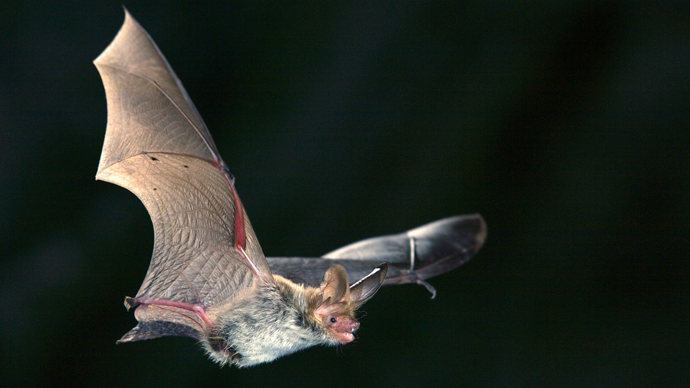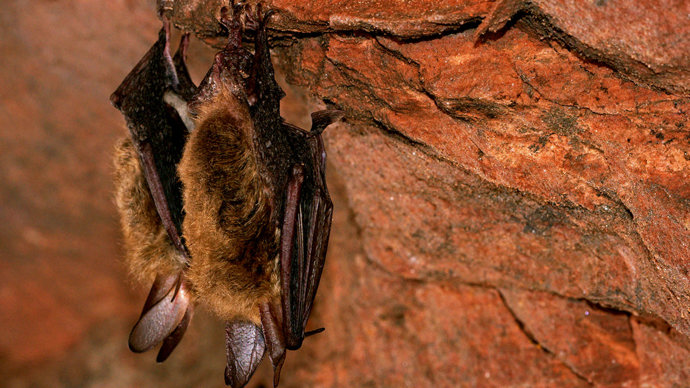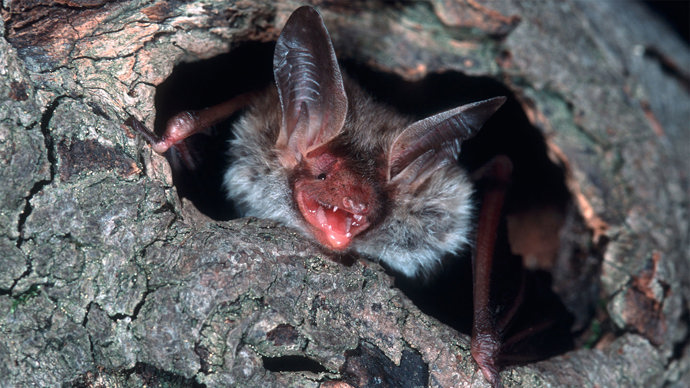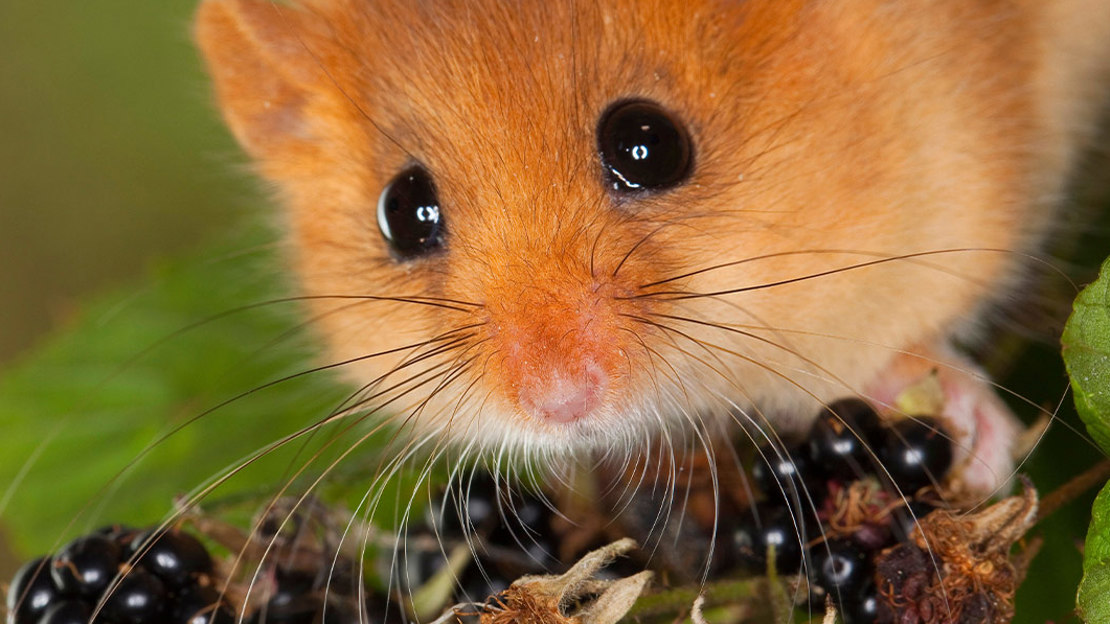Common name: Bechstein’s bat
Scientific name: Myotis bechsteinii
Family: Vespertilionidae
Habitat: ancient woodland, deciduous woodland, wet woodland
Diet: invertebrates
Predators: birds of prey and domestic cats
Origin: native
This elusive tree lover hunts, mates, and lives in woodland, relying on old trees for roosting sites. Loss of habitat means this once common species is now one of our rarer bats.
Common name: Bechstein’s bat
Scientific name: Myotis bechsteinii
Family: Vespertilionidae
Habitat: ancient woodland, deciduous woodland, wet woodland
Diet: invertebrates
Predators: birds of prey and domestic cats
Origin: native
Bechstein’s bats can grow up to 5cm in length with a wingspan of around 30cm. Adults have reddish-brown fur with a grey underside, while juveniles have grey fur. Look out for their pink faces and large broad ears.
Bats are more easily identified by the sounds they produce to help them hunt and navigate. However, Bechstein's bats have particularly quiet echolocation (a biological sonar), which makes them very hard to detect.

Credit: Arco Images / Alamy Stock Photo
Like all bats, Bechstein’s bat is nocturnal. It hunts by listening for flying insects passing by and attacks them. It has a diet of invertebrates, but favours moths – many of which are also associated with woodland.
Bechstein’s bats mate in the autumn and spring. Once pregnant, females form maternity colonies of up to 30 individuals, which move between collections of woodland roosts. They usually produce a single pup in June or July, which stays with its mother until August.

Credit: imageBROKER / Alamy Stock Photo
Bechstein’s bats rely on trees for hibernating through the winter, tucking themselves away in sheltered spots such as empty woodpecker holes. The species will also use bat boxes and has occasionally been found hibernating underground in caves or mines. Hibernation typically lasts from November to May, with exact timings dependent on weather conditions.

Credit: David Anderson / Alamy Stock Photo
Bechstein's bat is rare in the UK. There are only a few roosting sites known and these are all in southern England and Wales. They live in mature woodland and are often found close to water bodies.
You are unlikely to see one of these bats in your attic; the Bechstein bat rarely roosts away from trees, not even to hibernate in winter.
Oak and ash are thought to be particular favourites of Bechstein’s bat for roosting.
Bats are strictly nocturnal. You’re most likely to spot them just before dawn and after dusk. These bats tend to hunt in the canopy so they’re hard to see, but you may catch a glimpse as one swoops down towards water in wet woodland.
Bechstein’s bats rely on mature woodland for food and shelter. Evidence suggests the species was once one of the UK’s most common bats, but the loss of woodland across the country has seen its range and population shrink significantly. The current population is estimated at just 21,000.
Protecting those woods that remain and creating new habitat will help ensure the survival of this woodland specialist.

Woodland wildlife is fading before our eyes. Please support our appeal to save rare and threatened species.
Donate now